Garden Hanging Bag: The Solution to Growing Plants in Limited Space
Garden Hanging Bags: A Space-Saving and Convenient Way to Grow Plants
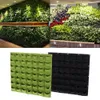
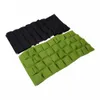
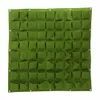
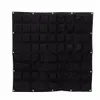
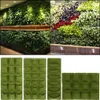
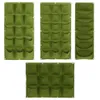
Benefits of using Garden Hanging Bags:
Garden hanging bags are an excellent solution for those who lack garden space or have limited mobility. They are designed to save space, offer portability and convenience, making them a perfect choice for gardeners of all levels. Here’s why you should consider using garden hanging bags:
Space-Saving
One of the significant benefits of garden hanging bags is that they are space-saving. You don’t need a large garden to grow your favorite plants. Hanging bags can be easily attached to walls, balconies, fences, or any other vertical surfaces, freeing up valuable floor space. This feature makes garden hanging bags an ideal choice for urban dwellers who have limited outdoor space.
Portability
Another advantage of garden hanging bags is that they are portable. You can move them around your outdoor space as needed, which means you can grow your plants wherever you want. This feature also makes them convenient for gardeners who may not be able to bend down to tend to their plants.
Ideal for Growing Different Types of Plants
Garden hanging bags are suitable for growing various types of plants, including herbs, flowers, and vegetables. These bags come in different sizes, from small to large, which makes them versatile enough to accommodate different plant sizes and varieties. You can easily create a beautiful vertical garden, growing your favorite plants without having to worry about space constraints.
Adds Beauty to Your Living Space
Garden hanging bags aren’t just functional; they also add beauty to your living space. They come in a range of colors, materials, and designs, allowing you to choose one that best fits your style and complements your home decor. With beautiful plants cascading from your hanging bags, you can transform an otherwise drab area into a vibrant and lively oasis.
Types of Garden Hanging Bags:
The first type of garden hanging bag is made of fabric. These bags are lightweight and easy to move around, making them perfect for people who like to rearrange their plants often. Fabric bags are also available in a range of colors and designs, allowing gardeners to match them to their decor style. The material used to make these bags is breathable, which allows air and water to pass through, ensuring that plants get the necessary nutrients to thrive.
The second type of garden hanging bag is made of metal or plastic. These bags come in many different sizes and designs, making them suitable for growing a wide variety of plants. They are also durable and weather-resistant, making them ideal for outdoor use. One of the biggest advantages of metal or plastic bags is that they can hold more soil than fabric ones, allowing plants to grow larger.
The third type of garden hanging bag is made of recycled materials. These bags are environmentally friendly and come in a range of sizes and designs. They are perfect for gardeners looking for sustainable options for their plants. Recycled bags are typically made of materials such as old tires, bottles, and coffee sacks. They provide a unique look to any garden and are perfect for those who want to make a statement with their plants.
When choosing a garden hanging bag, it is important to consider the space available and the type of plant that will be grown. For smaller areas, fabric bags are the best option, while larger areas may require metal or plastic bags. Plants that require good drainage, like succulents or herbs, do well in fabric bags, whereas plants that need a lot of water, like tomatoes or peppers, do better in metal or plastic bags.
How to Use Garden Hanging Bags:
Step 1: Choose the Right Location
When selecting a location for your garden hanging bag, consider the amount of sunlight, wind, and water it will receive. Most plants need at least six hours of direct sunlight per day, so choose a spot that gets enough sunlight throughout the day. Also, make sure the location is not too windy, as strong winds can damage or knock over the bags. Finally, ensure that the location is accessible for watering and harvesting.
Step 2: Prepare Soil
Before filling your garden hanging bag with soil, you need to prepare the soil mix. A good soil mix for garden hanging bags should be lightweight, well-draining, and rich in nutrients. You can use a pre-made soil mix or make your own by combining equal parts of peat moss, perlite, and vermiculite or coconut coir. Avoid using heavy or compacted soil, as it can lead to poor drainage and root rot.
Step 3: Plant Seeds or Seedlings
Once you have prepared the soil mix, it’s time to plant your seeds or seedlings. Depending on the type of plants you want to grow, you can either sow seeds directly into the bag or transplant seedlings from pots. Make sure to follow the planting instructions for each plant, such as spacing, depth, and watering requirements. You can also mix different plants in one bag, but make sure they have similar growing conditions and don’t overcrowd each other.
Step 4: Water and Fertilize
Watering is crucial for the growth and health of your plants. Garden hanging bags need more frequent watering than traditional gardens because they dry out faster. Water your plants once or twice a day, depending on the weather and the size of your bag. Make sure to water deeply enough to reach the roots but avoid overwatering, which can cause waterlogged soil and root rot. Fertilizing is also important to provide your plants with essential nutrients. You can use organic or chemical fertilizers, depending on your preference and the type of plants. Follow the fertilizer instructions carefully, as over-fertilization can harm your plants.
Step 5: Maintain Your Garden Hanging Bags
To keep your garden hanging bags healthy and productive, you need to maintain them regularly. This includes pruning, harvesting, and cleaning. Pruning involves removing dead or damaged leaves, stems, or flowers to promote new growth and prevent disease. Harvesting means picking fruits, vegetables, or herbs when they are ripe and ready to eat. Cleaning involves removing debris, pests, or dirt from the bags to prevent contamination and improve appearance. You can also rotate your plants or change the soil mix every season to prevent soil depletion and disease buildup.
In conclusion, using garden hanging bags can be a fun and rewarding way to grow plants in small spaces. By following these step-by-step instructions and tips, you can create a beautiful and thriving garden in your balcony, patio, or wall. Remember to choose the right location, prepare soil, plant seeds or seedlings, water and fertilize regularly, and maintain your garden hanging bags to enjoy fresh and healthy produce all year round.
FAQ
Q1. What is a garden hanging bag and how does it work?
A garden hanging bag is a vertical gardening solution that allows you to grow plants in limited space. It is made of durable material such as felt or fabric and has multiple pockets or compartments where you can plant your favorite herbs, vegetables, and flowers. The bag is designed to be hung on a wall, fence, or balcony railing, using hooks or straps. The concept behind the garden hanging bag is to utilize vertical space for gardening, which saves ground space and makes it easy to water and care for the plants.
Q2. What are the benefits of using a garden hanging bag?
There are several benefits of using a garden hanging bag. Firstly, it allows you to maximize your gardening space, even if you have limited outdoor space. Secondly, it is an excellent solution for those who do not have access to a backyard or garden but still want to grow plants at home. Thirdly, garden hanging bags are extremely versatile and can be used to grow a wide variety of plants, including herbs, strawberries, tomatoes, and flowers. Finally, they are easy to maintain and require less watering than traditional pots or containers.
Q3. How do I choose the right garden hanging bag for my needs?
When choosing a garden hanging bag, there are a few things to consider. Firstly, think about the size of the bag and how many plants you want to grow. If you have limited space, you may want to choose a smaller bag with fewer pockets. Secondly, consider the material of the bag – felt and fabric are both good options, but make sure the bag is sturdy and durable. Finally, think about the style of the bag and whether it will match your outdoor decor.
Q4. How do I plant and care for my plants in a garden hanging bag?
Planting and caring for plants in a garden hanging bag is relatively easy. Firstly, fill each pocket with soil, leaving enough room for the plants to grow. Next, plant your chosen herbs, vegetables, or flowers according to their specific requirements. Make sure to water the plants regularly and fertilize them occasionally. Check the bag frequently for any signs of pests or disease. Lastly, enjoy watching your plants grow and harvest them when they are ready.



